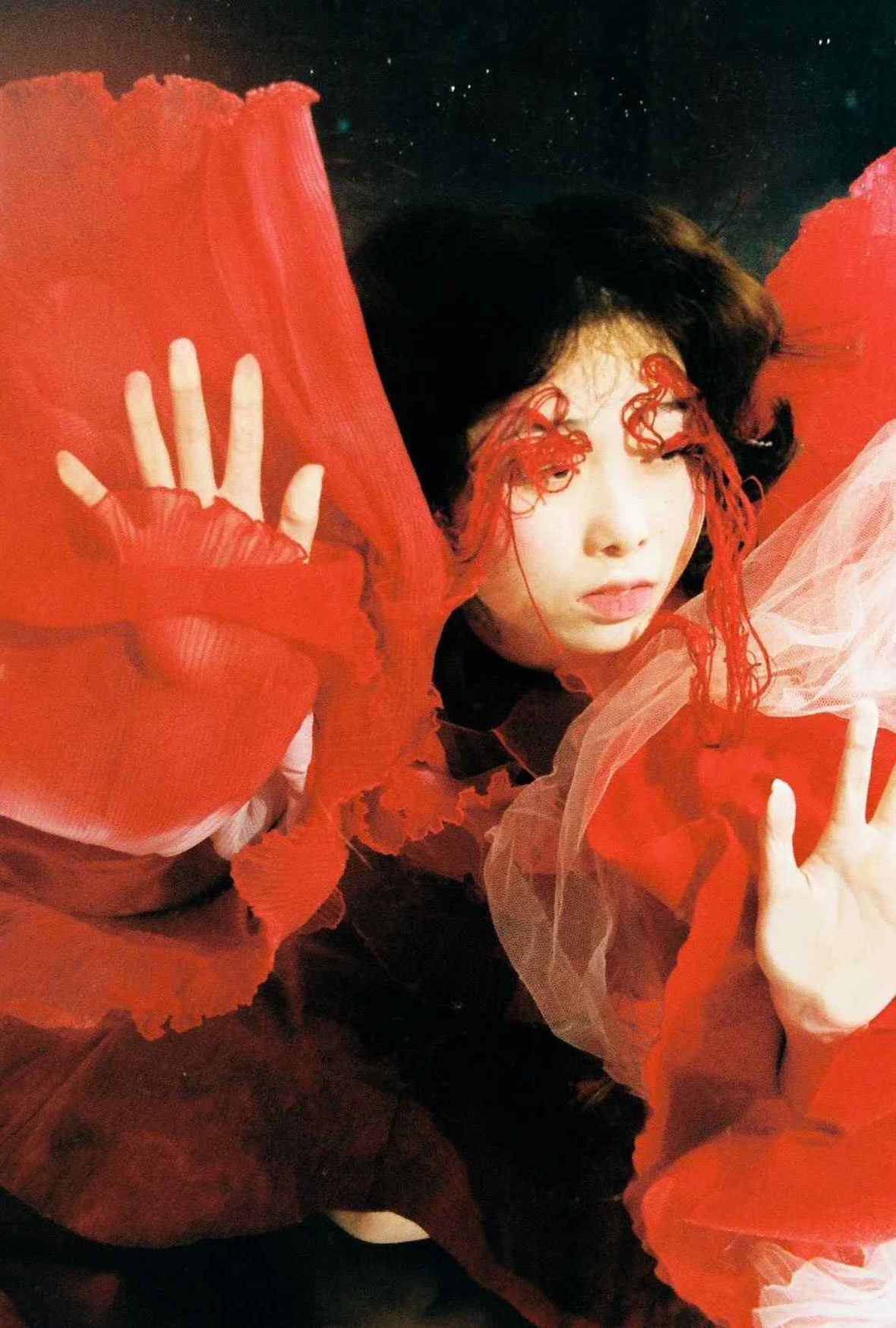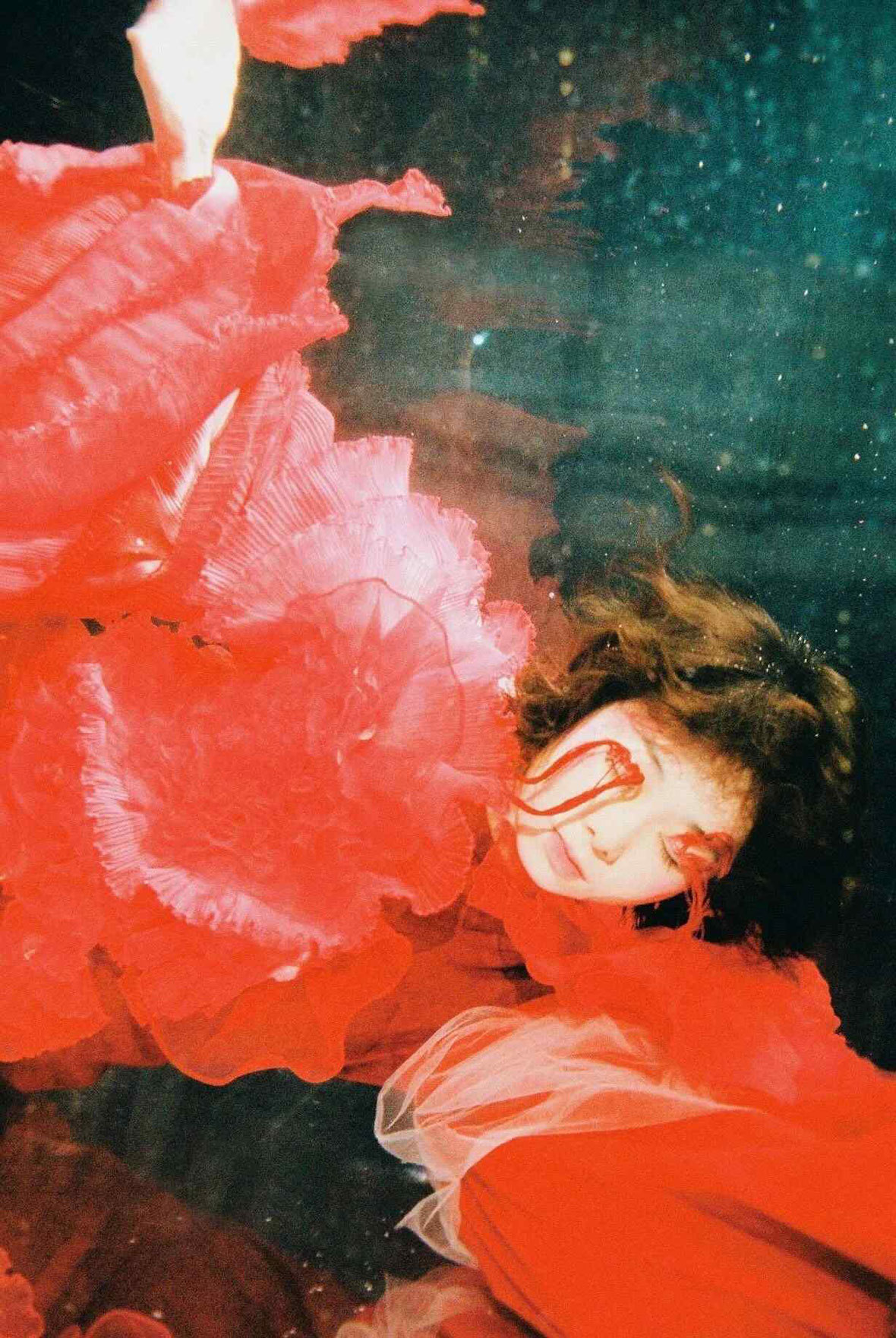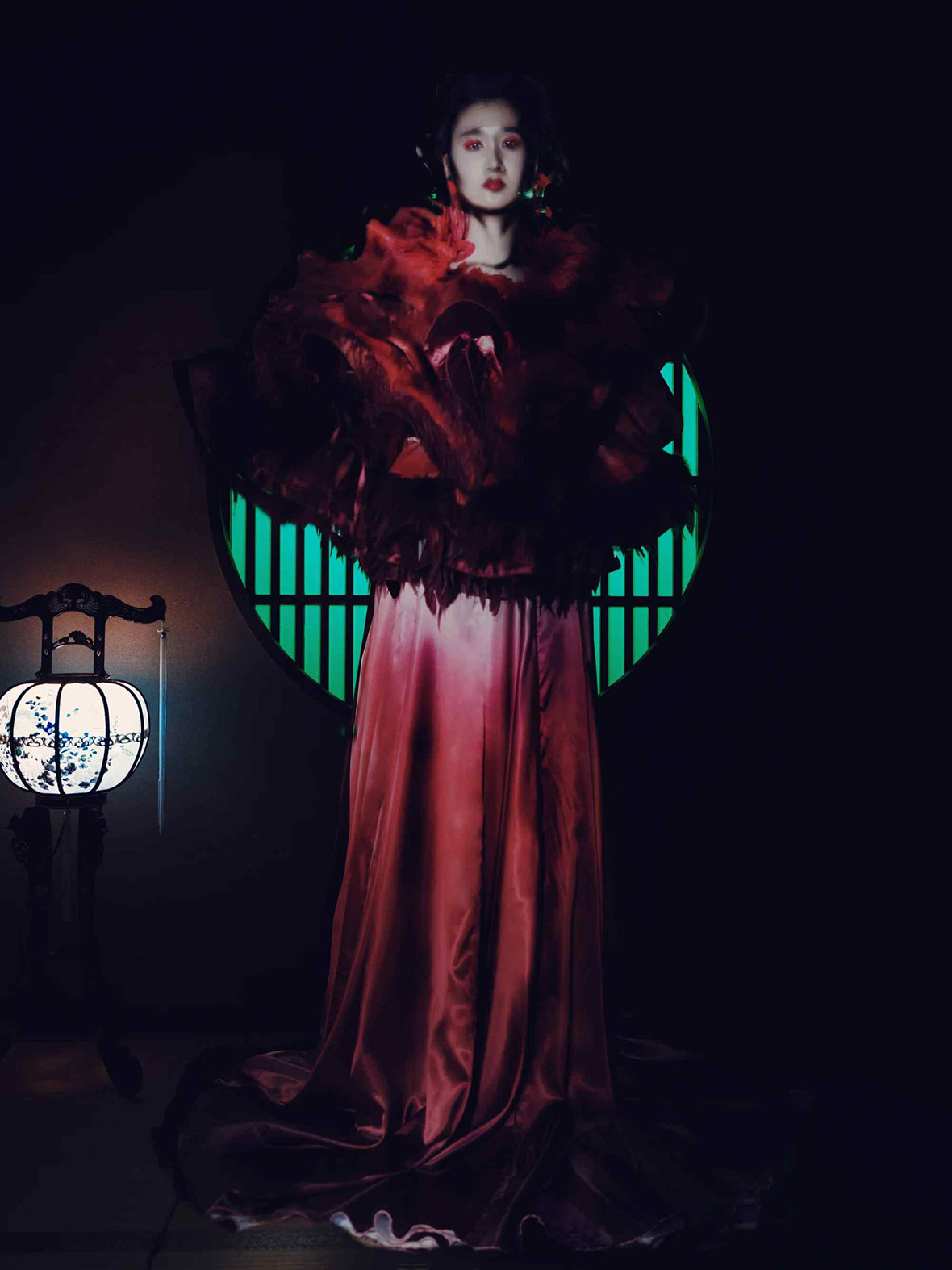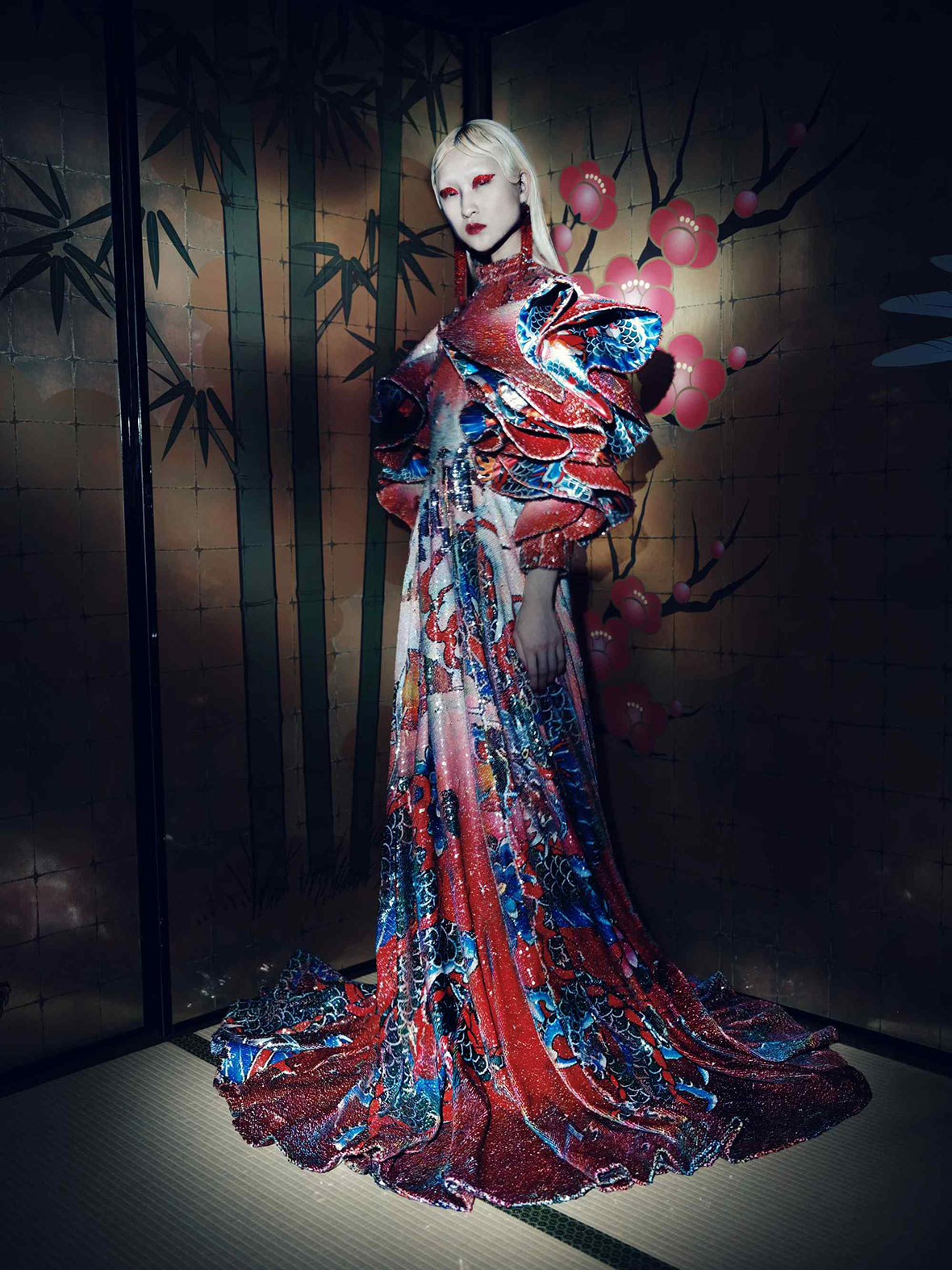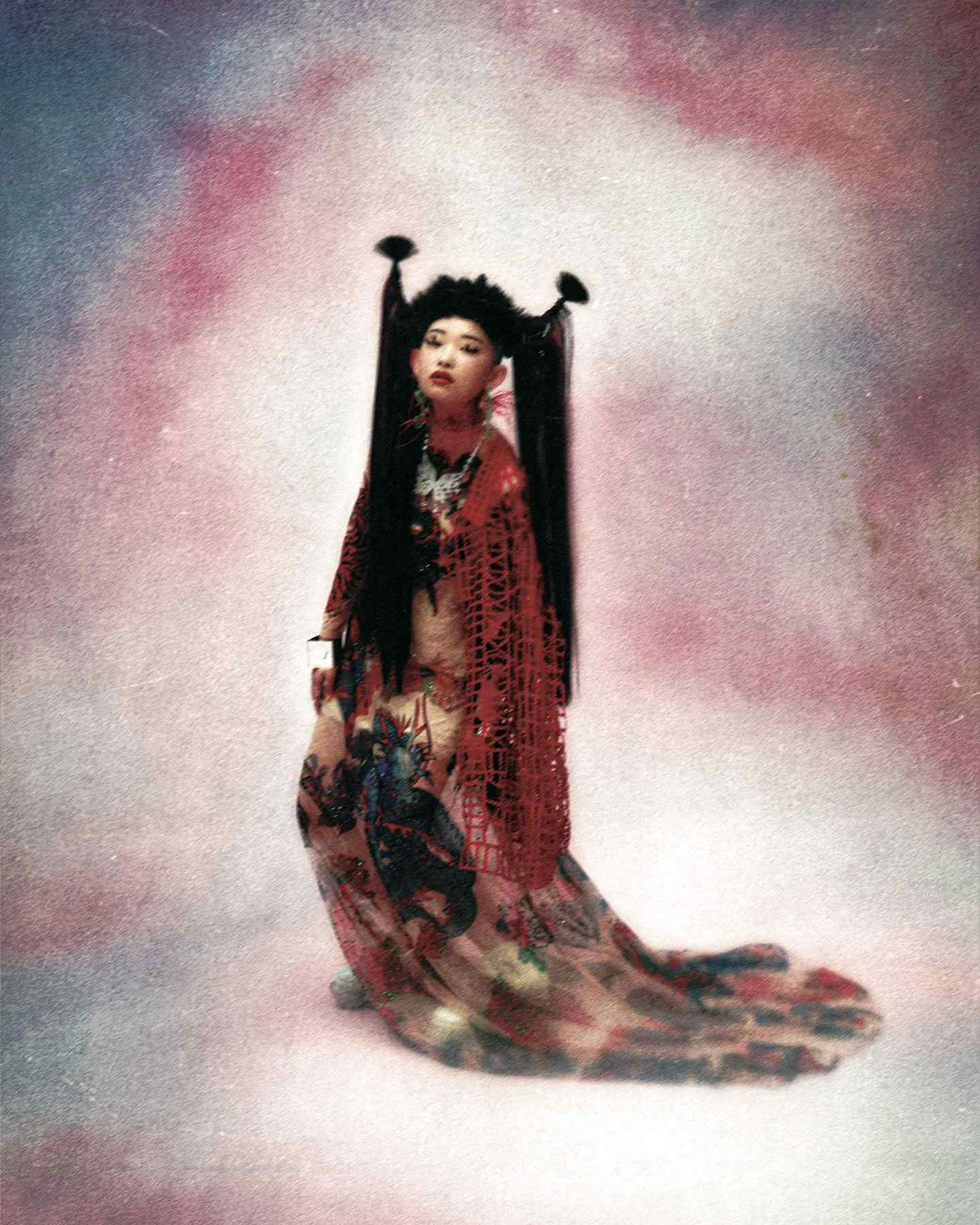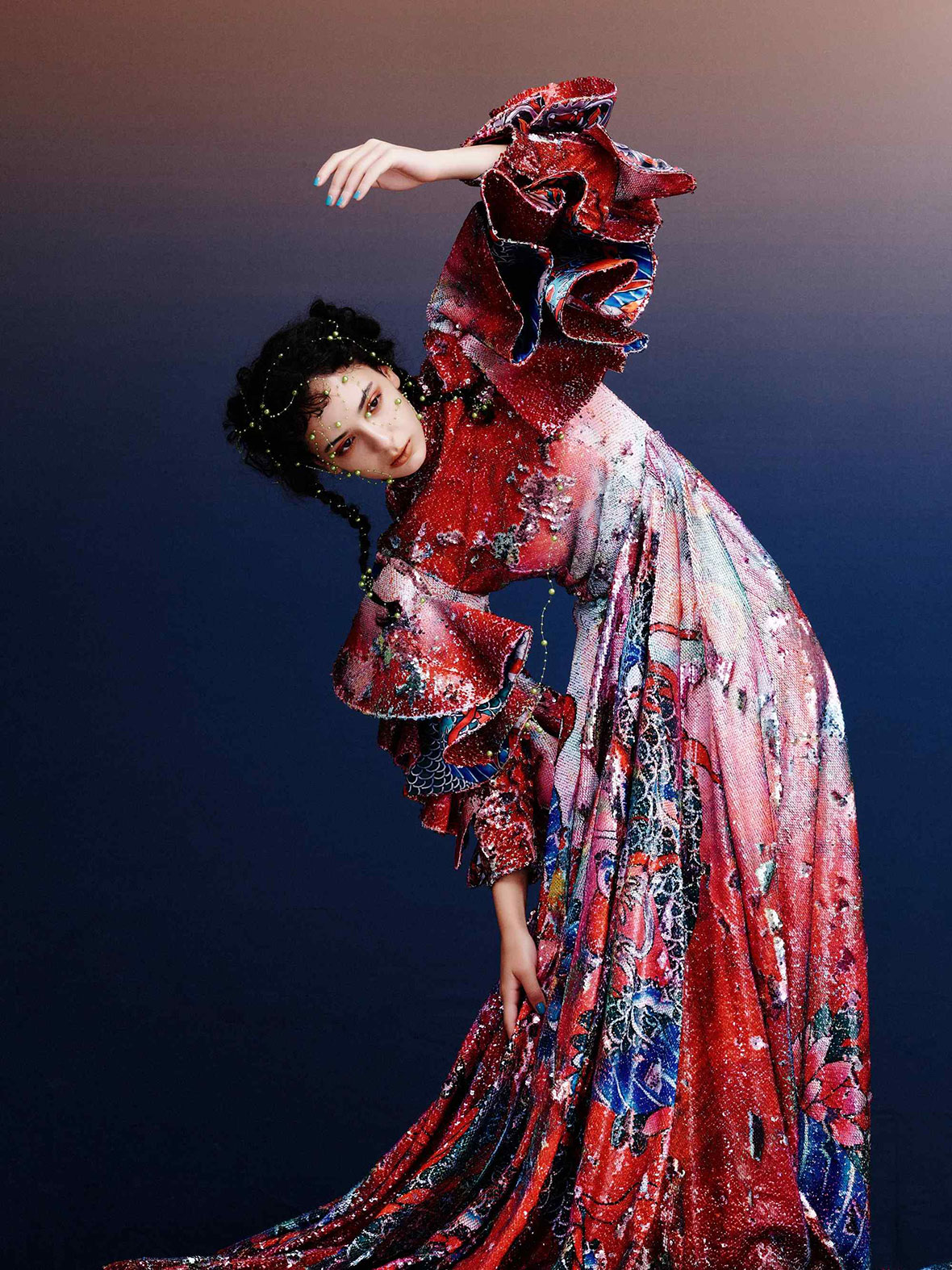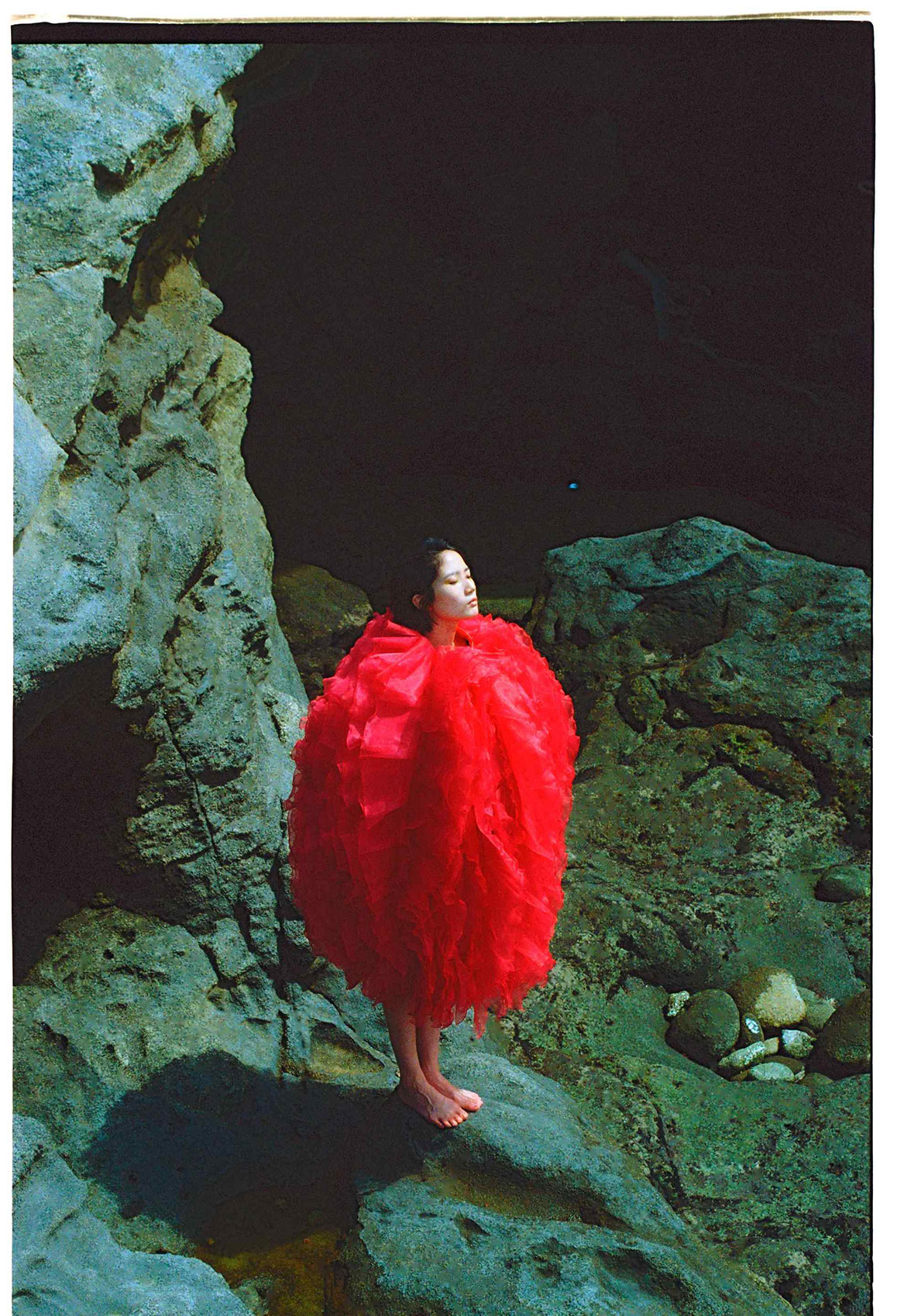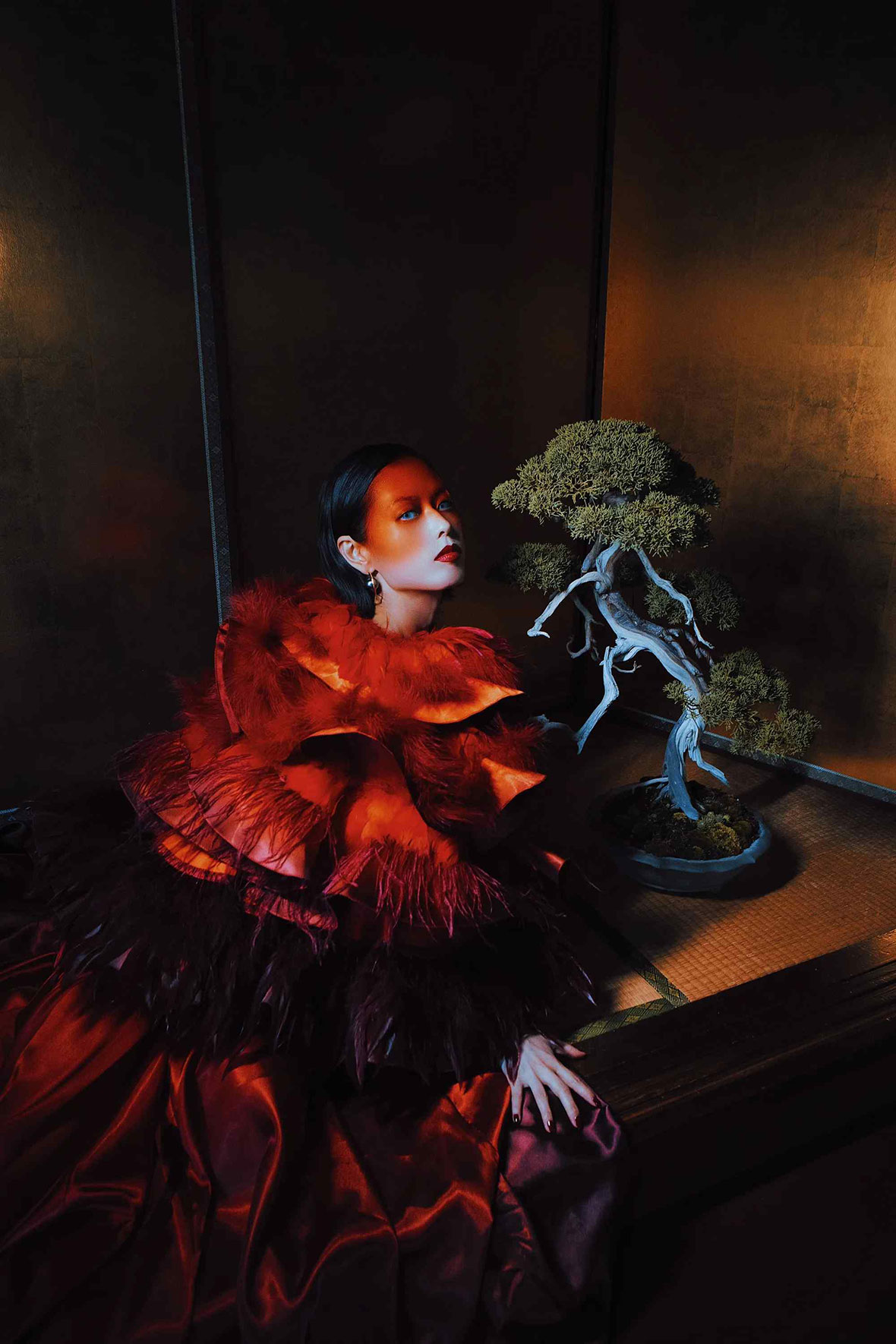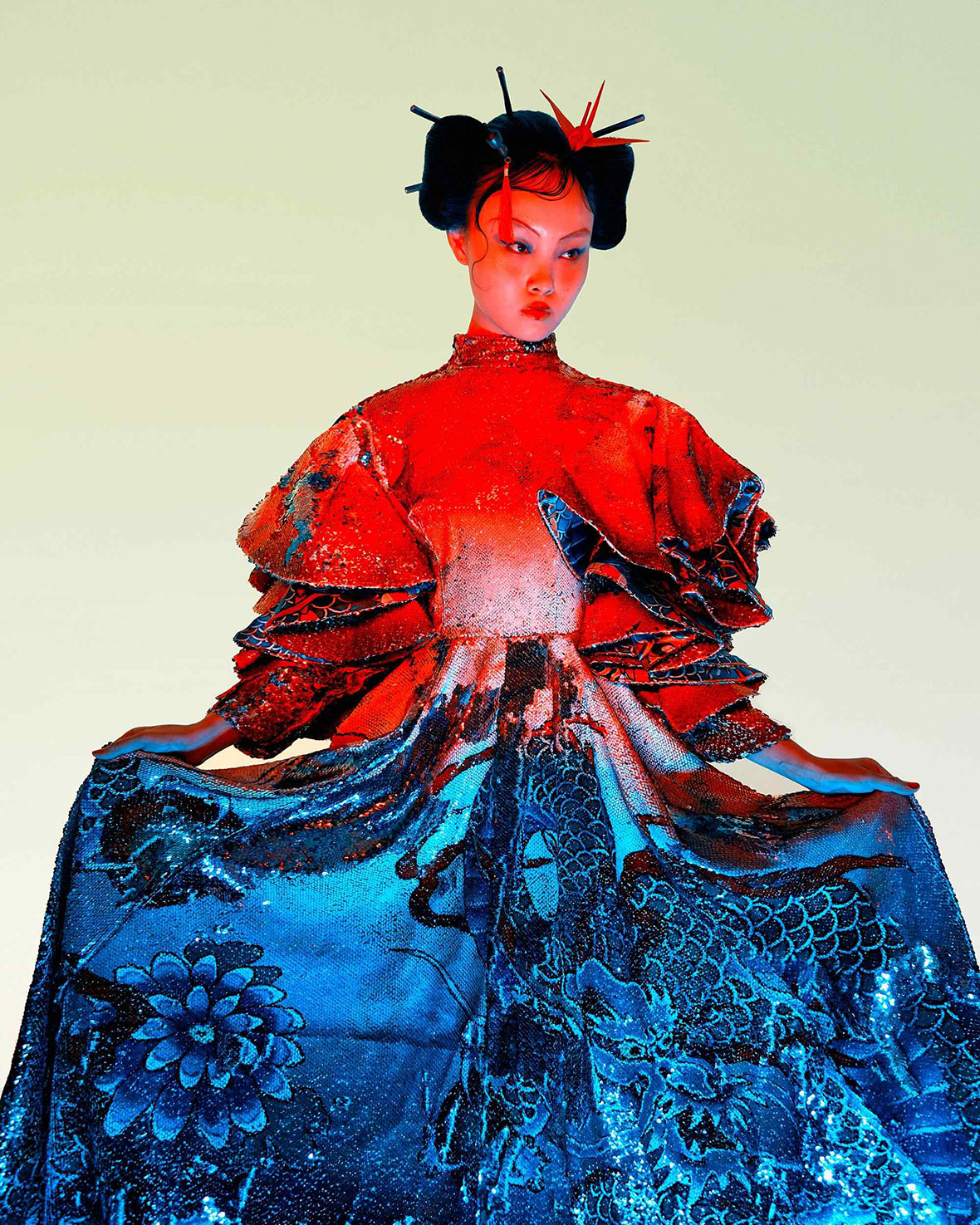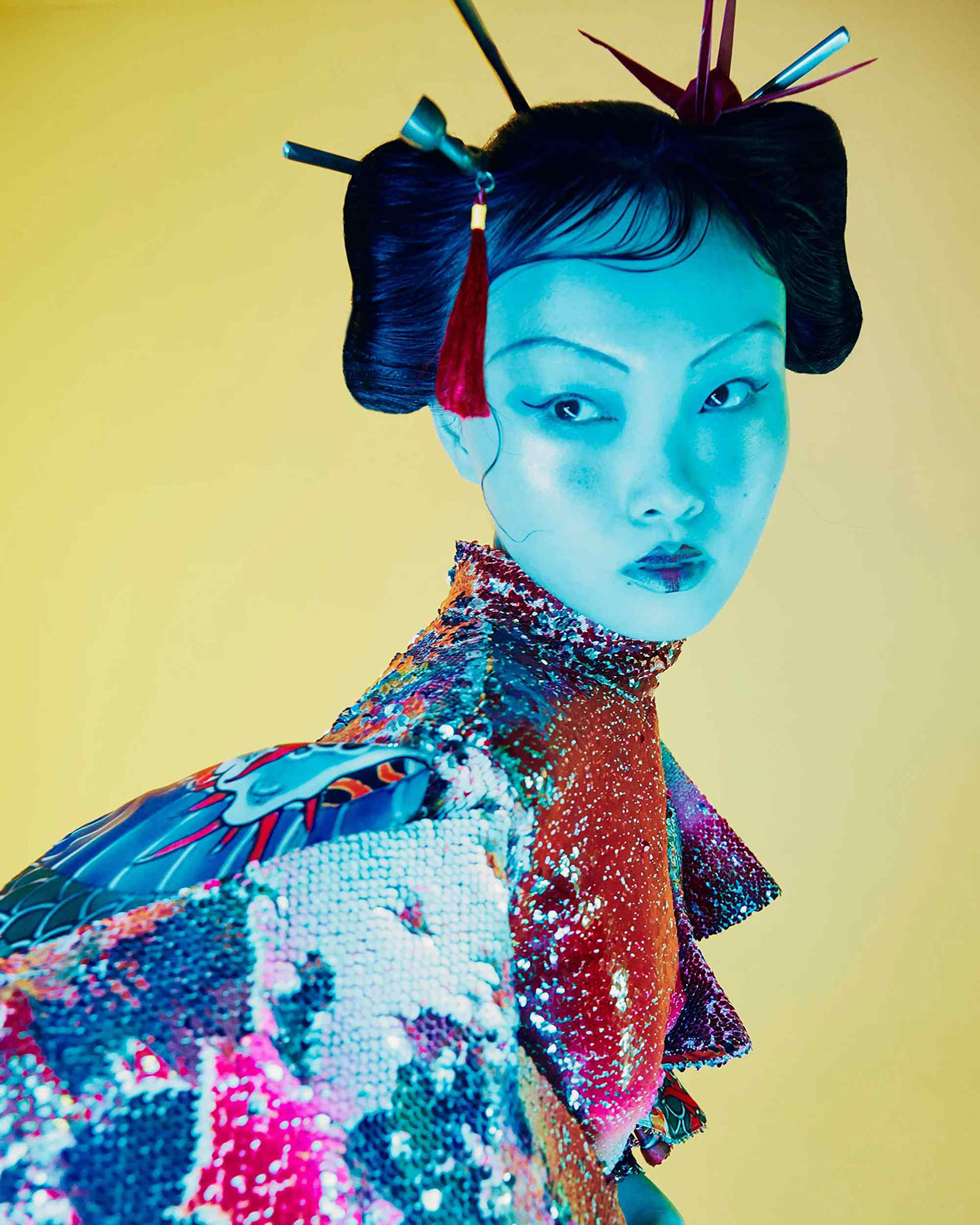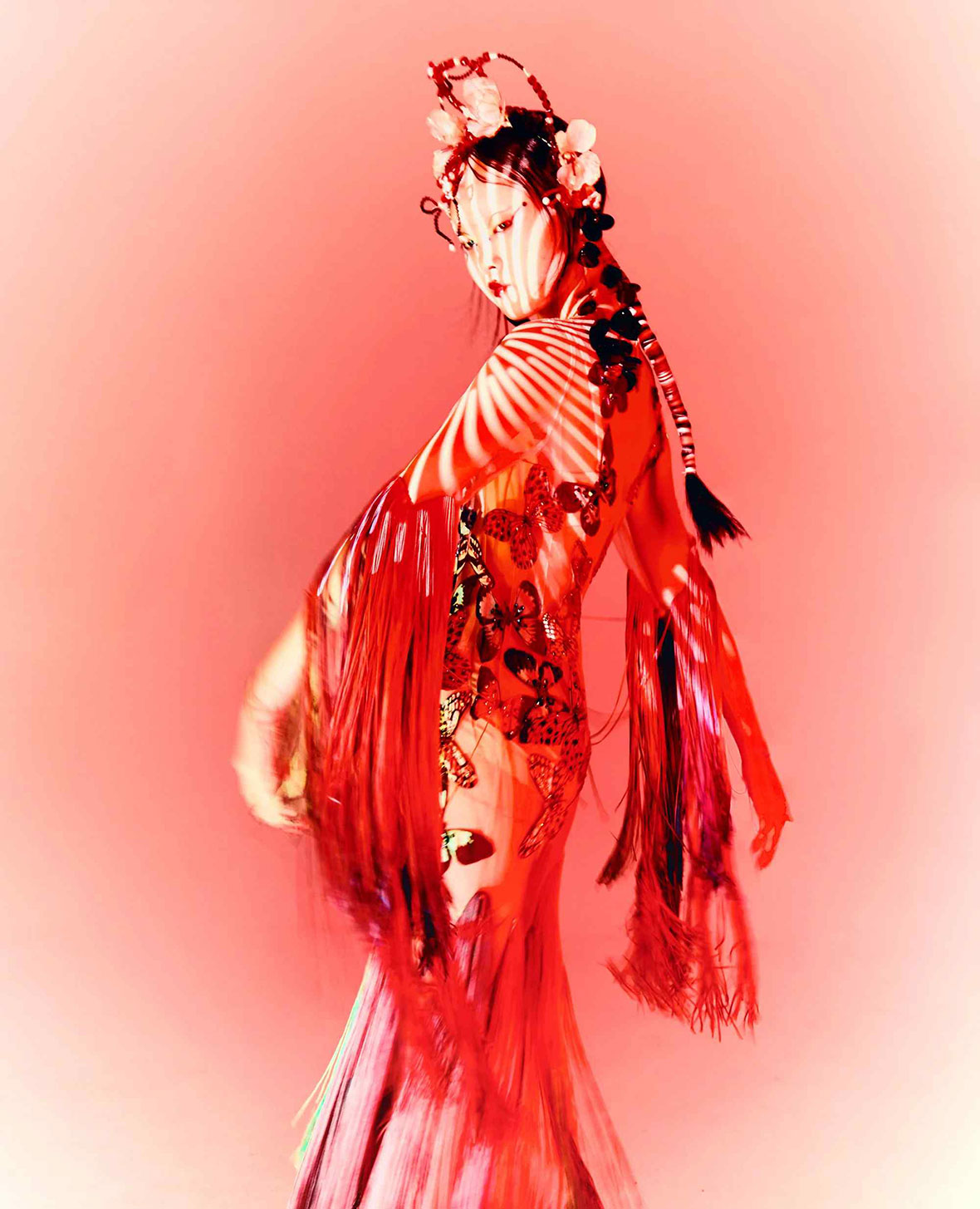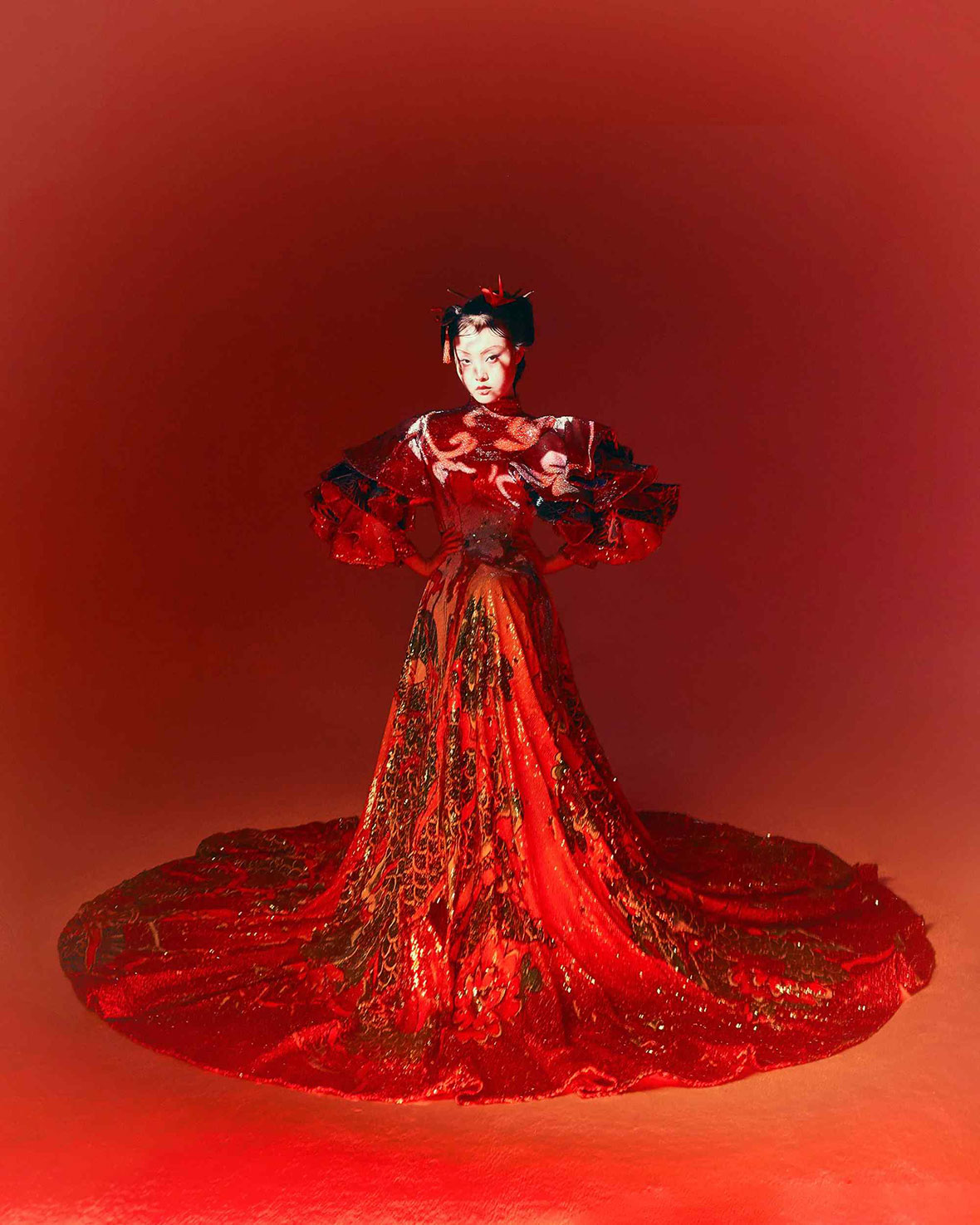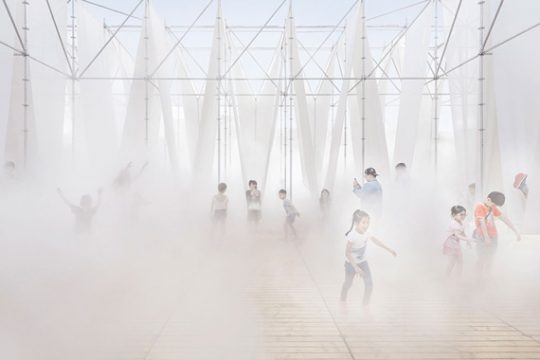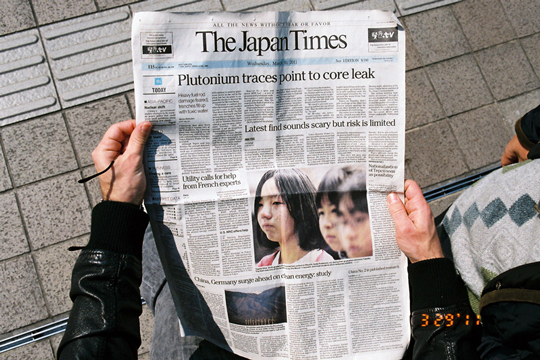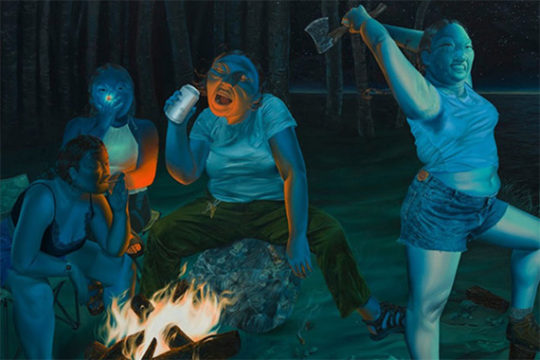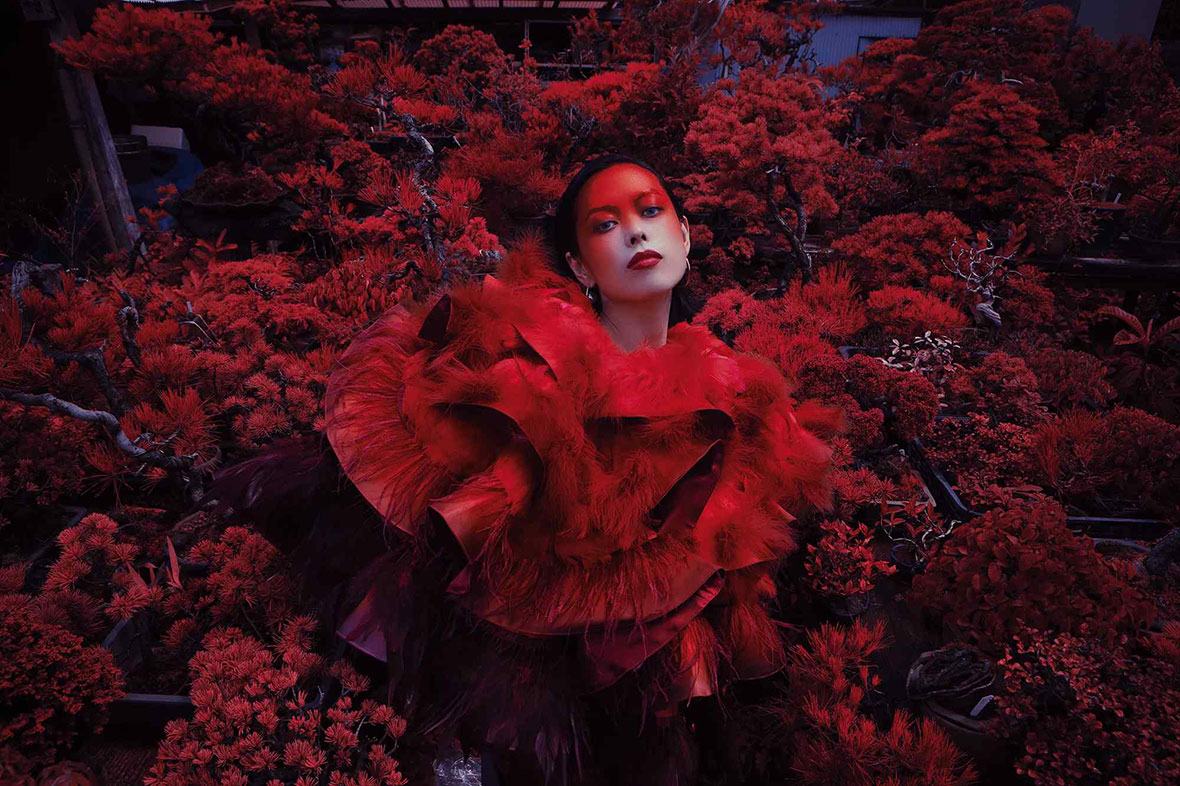
Fashion has always been about more than just the clothes themselves. They’re meant to be worn and be seen in public after they’ve been created, a method of expression of both the wearer and creator. For Japanese designer Yu Tanaka, the clothing is just the foundation for a larger vision. She doesn’t view her creations as finished until the full editorial shoot is complete. The model, make-up artist, hair stylist, photographer, and shooting location are all integral to the final result for her: “My work is only completed when all the pieces of the puzzle are ready.”
一直以来,服装本身并不是时尚的全部。当把设计穿着在身,穿戴者和设计师获得一种公开的方式来表达自我。在日本设计师 Yu Tanaka 看来,服装的设计部分只是她的第一步,整套作品只有最终拍摄成片,才算大功告成。而在这其中,模特、化妆师、发型师、摄影师和拍摄场地,都分别饰演重要一环:“我的创作就像拼图,只有当每一块都拼好后,才算完成。”
This outlook might be attributed to her childhood dreams of being an artist before she found her way to fashion design. Growing up in Tokyo, her first artistic love was Yayoi Kusama, the installation artist known for creating immersive environments that viewers literally enter. “She inspired me to pour my heart into drawing,” Tanaka says. “Eventually I landed on the idea of applying those pictures to clothing design.”
Tanaka went on to study at the Bunka Fashion College, and in her second year, an international magazine hired her to go overseas—a project that honed her style, one rooted in tradition but also peering far into the future and drawing on a deep well of individuality. Now graduated and 23 years old, she’s continued designing in a similar aesthetic, constantly pushing it in new ways and developing it in further detail.
如今的时装设计师的身份源自她童年的艺术梦,这颗种子在她成为设计师之前便早早埋下。Tanaka 在东京长大,草间弥生是她最初崇拜的偶像。这位装置艺术家尤其擅长为观众营造沉浸式体验,影响 Tanaka 走上艺术创作的道路。Tanaka 说:“受草间弥生的启发,我开始迷上绘画,并最终萌生了将画作融入服装设计的想法。”
后来,Tanaka 就读于东京文化时装学院(Bunka Fashion College)。大学二年级,受一家国际时尚杂志的邀请,她前往海外参与项目。借此机会,她打磨出自己独特的设计风格——同时兼备传统、未来与自我。这种风格在如今 23 岁的 Tanaka 的作品中仍有体现,同时又在创新与丰富性上寻找了许多新的出路。
Her work has a timeless feel, with editorial shoots that seem to stretch across millennia. Vintage photography aesthetics, traditional inspirations, and surreal settings augment the enigmatic feel and mysterious patterns of Tanaka’s designs. The references, colors, and techniques make her work a contemporary and personal tribute to traditional Japanese culture, and the final images glide in a half-world between yesterday and tomorrow.
This idea of blending differences is central to her color images as well, which are also blurred and escape hard definition. It’s especially prominent in the work she draws out of her photographers. Faces are warped and undefined, swinging appendages leave trails in the air, and grains are so thick they eviscerate any notion of sharpness. The backgrounds are hazey and full of rich colors that compliment and contrast her designs, often seeping into the clothes themselves. “I am not a big fan of pure, clear expressions,” Tanaka explains.
Tanaka 的作品有能穿越时空的魅力,成片给人一种历经千年岁月的感受。复古、传统文化元素、以及超现实主义布景,进一步增强了 Tanaka 作品的超然体验。她通过这些元素的融合、色彩与技巧的运用、当代审美的个性表达,来致敬日本传统,让服装游走于过去与未来的缝隙之间。
融合,是她作品的关键,这一点从色彩的选用上便可察觉,模糊暧昧,难以被界定。在照片的拍摄上体现得尤为突出。人物面孔被刻意虚化,变得朦胧,其身上摇摆的饰物在空中留下痕迹;画面被厚重的颗粒填充,把锐度的概念抛之脑后。而背景则如同披上一层迷雾,浓郁色彩与服装相互衬映,或相得益彰、或拉高对比度,与衣服本身达成超高的契合度。Tanaka 解释说:“纯粹、泾渭分明的表述,不是我想要的。”
Tanaka uses deep, heavy reds in nearly all her designs. Whether paired with warm gold or vibrant blue, it becomes the central focus. “Red symbolizes love, passion, and anger, all blending into everyday life,” she says. But she rarely uses pure colors. It’s always a mix or a gradient, one color constantly bleeding into another, sometimes almost imperceptibly. “The technique is actually inspired by Japanese ukiyo-e prints,” she explains.
深沉的红色几乎占据了她所有作品,即便会有其他颜色来被用来点缀,但这一抹红,始终是画面的焦点。她解释道:“红,象征着爱情、激情和愤怒,所有这些,交织成我们每天的生活。”但她很少使用纯色,而总是混合颜色或使用渐变色,将不同色彩参杂在一起,很多时候甚至很难分清不同颜色的界线,“这种技巧的灵感实际上来自日本浮世绘版画,”她说。
In one dress that pits powerful blues against thick crimson, the colors seem to flip entirely in the next photograph—with the colors inverted from top to bottom and violent, cyans, and more emerging from within hidden folds of fabric. She achieved this by using double-sided sequins so the color and the pattern change depending on the viewing angle. This color contrast was further amplified by switching the background colors for the two shots.
The focus on red and other unique colors is a nod to the long history of Japanese art and design. “We prize distinctive colors in Japan but I feel these values wane every day,” Tanaka laments. “I’m determined to preserve Japanese colors by fusing them into the dresses I design and showing them to the rest of the world.”
在其中一件连衣裙上,红色在蓝色的衬托下如同夜幕下的岩浆,彼此的交织形成强烈对比;在另一套衣服上,两种颜色上下排列,一泻千里。在面料的褶皱中,紫色、青色和更多调色若隐若现。这是她使用双面亮片呈现的效果。从不同角度看,颜色和图案有所变化。此外,她还特意为服装的拍摄选择不同颜色作为背景,进一步突显色彩的对比。
可以说,这种对色彩的运用,实际上是对日本艺术和设计的一种认可与赞许。“日本人对罕见的颜色情有独钟,但这种价值观如今却渐渐消逝,” Tanaka 感叹道,“我决定将日本传统艺术中所用到的颜色延续在我的服装设计上面,向全世界发起视觉冲击。”
Tanaka draws on tradition in other ways as well, such as by using mythical creatures and animals from Japanese folk tales as roots for her textile design. She also frequents the library and museums for research once she’s settled on a theme for a new design.
“Techniques that have been passed down over centuries are so unique and could never be copied,” Tanaka says. “I believe it’s just correct to pay tribute. But I also want to fuse my own worldview with traditional culture and carry that into the future. I want to make individualistic clothes that no one else can make.”
除此之外,Tanaka 还以更多方式来致敬传统,例如以日本民间传说中神话动物为灵感设计的织物。每当确立新的设计主题时,她还会经常跑去图书馆和博物馆里查找线索。Tanaka 说:“传承了数百年的工艺如此独特,它们永远无法被复制。作为后人,我佩服地五体投地。但同时,我也希望在传统中融入自己的元素,并一起传递到未来。我只想设计我自己的衣服,带有强烈个人元素的那种。”
Like our stories? Follow us on Facebook and Instagram.
Instagram: @you_tanaka_lr
Contributor: Mike Steyels
Chinese Translation: Olivia Li

